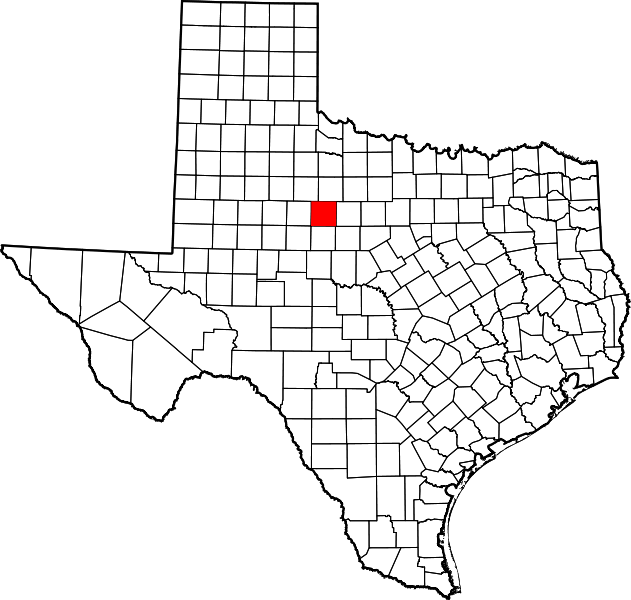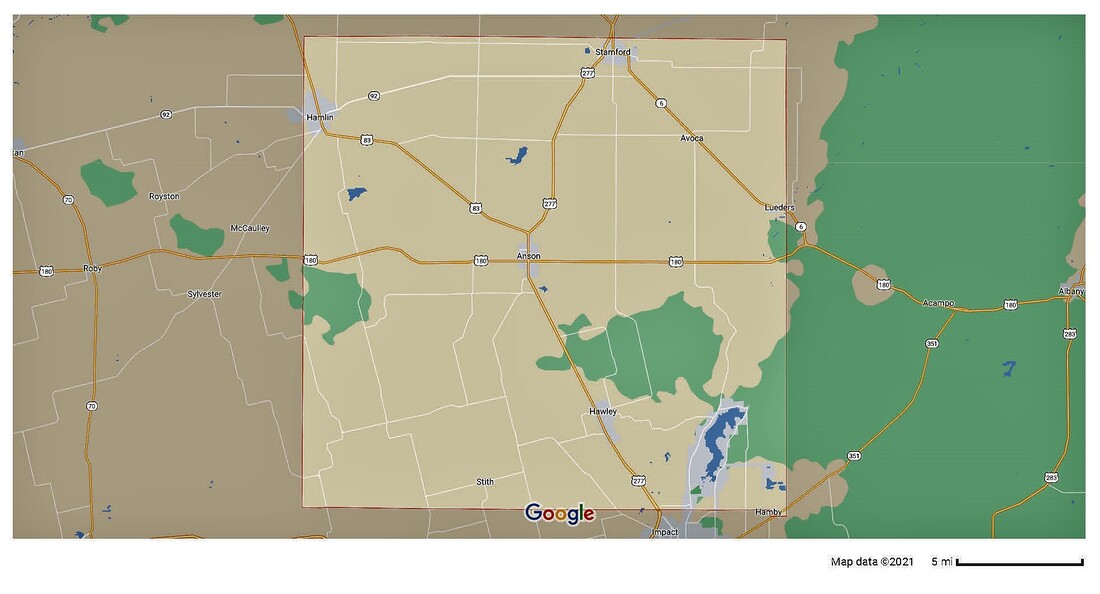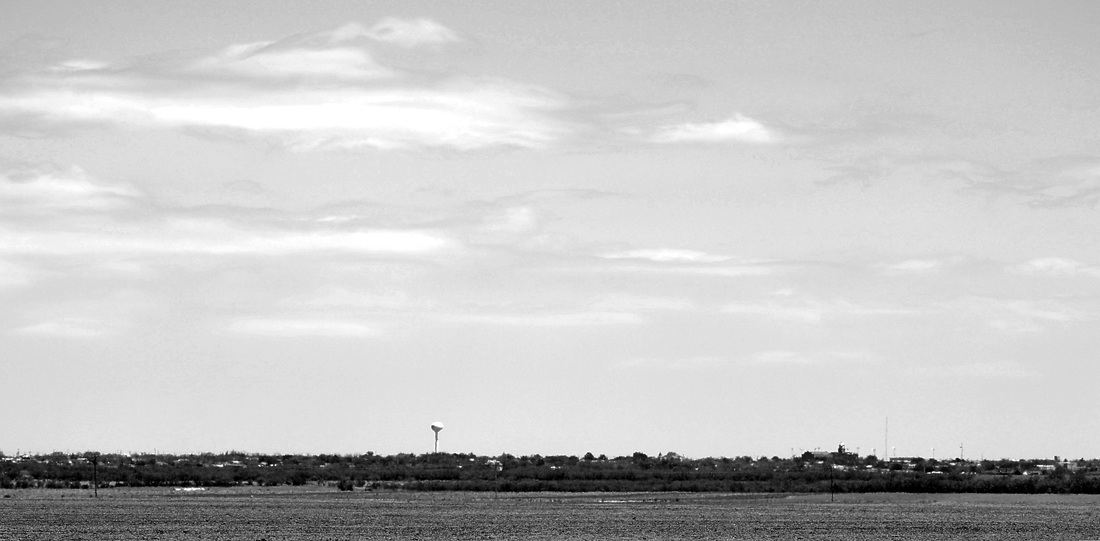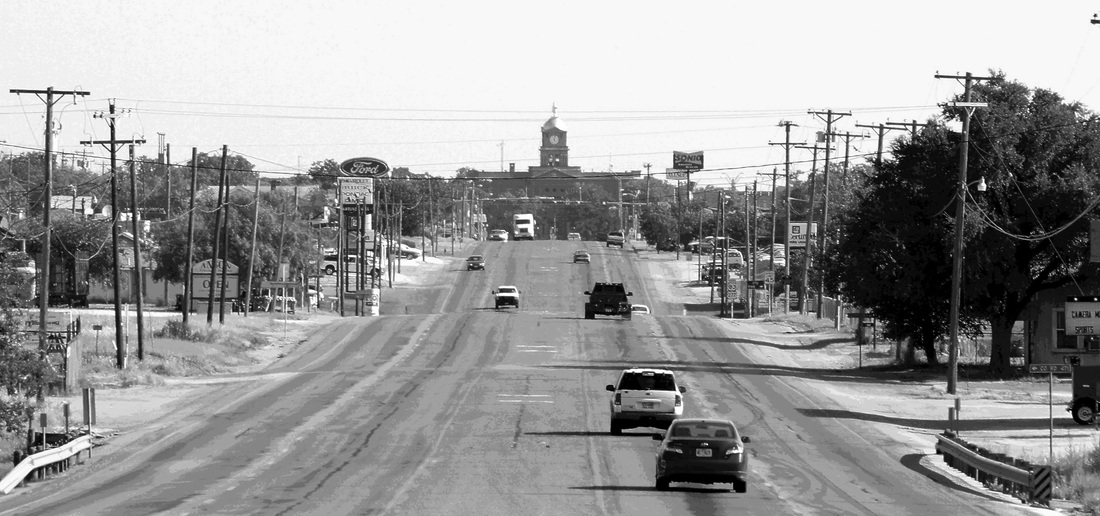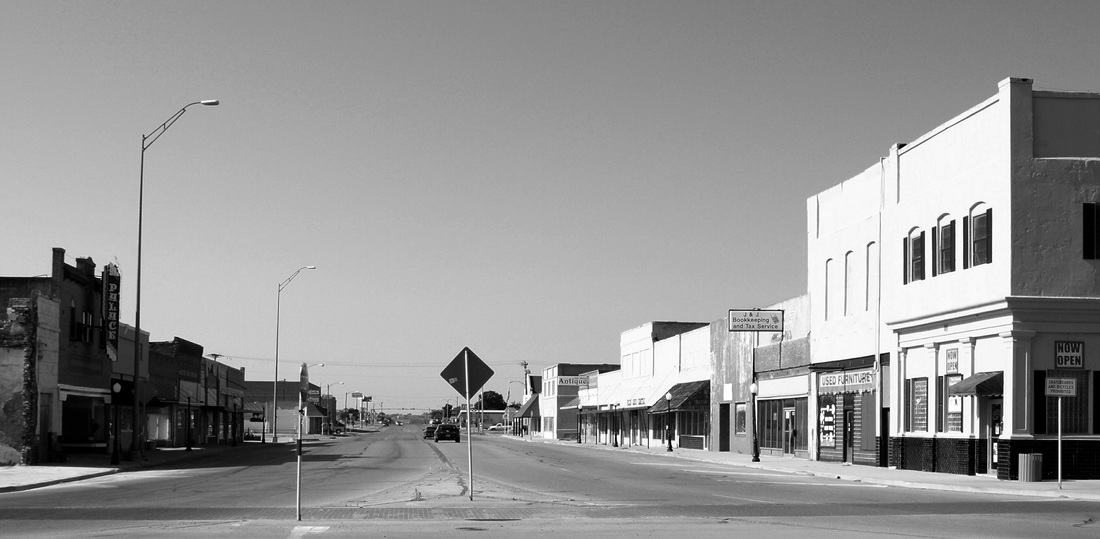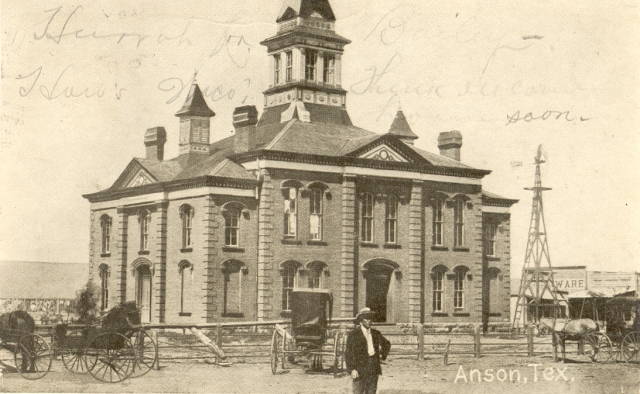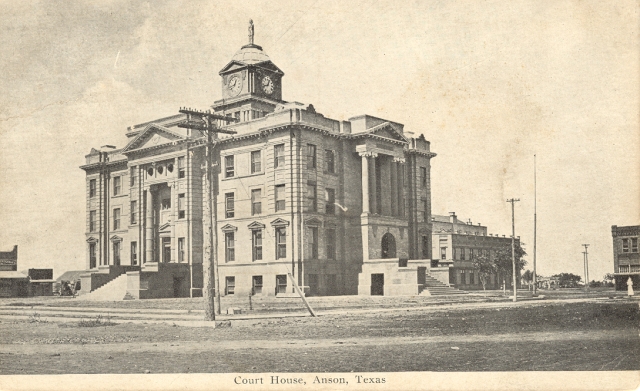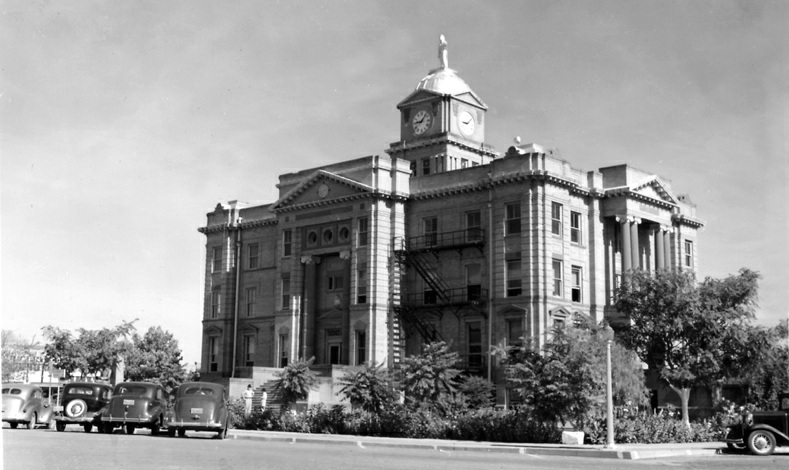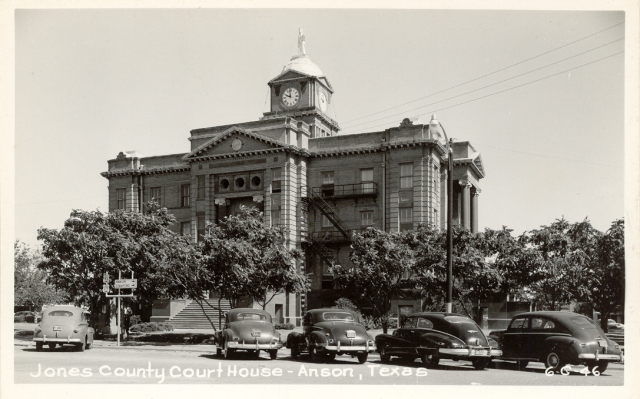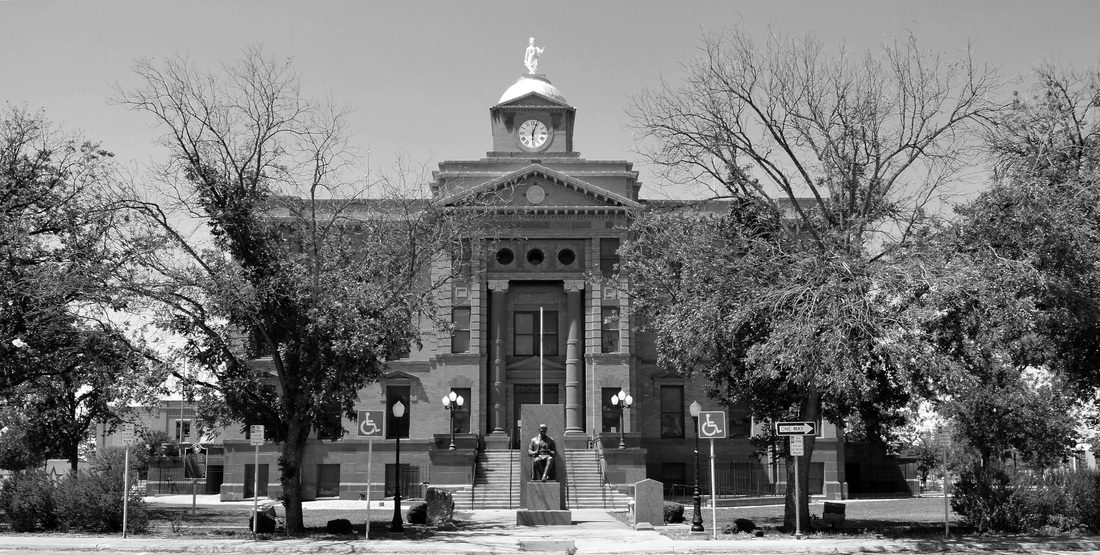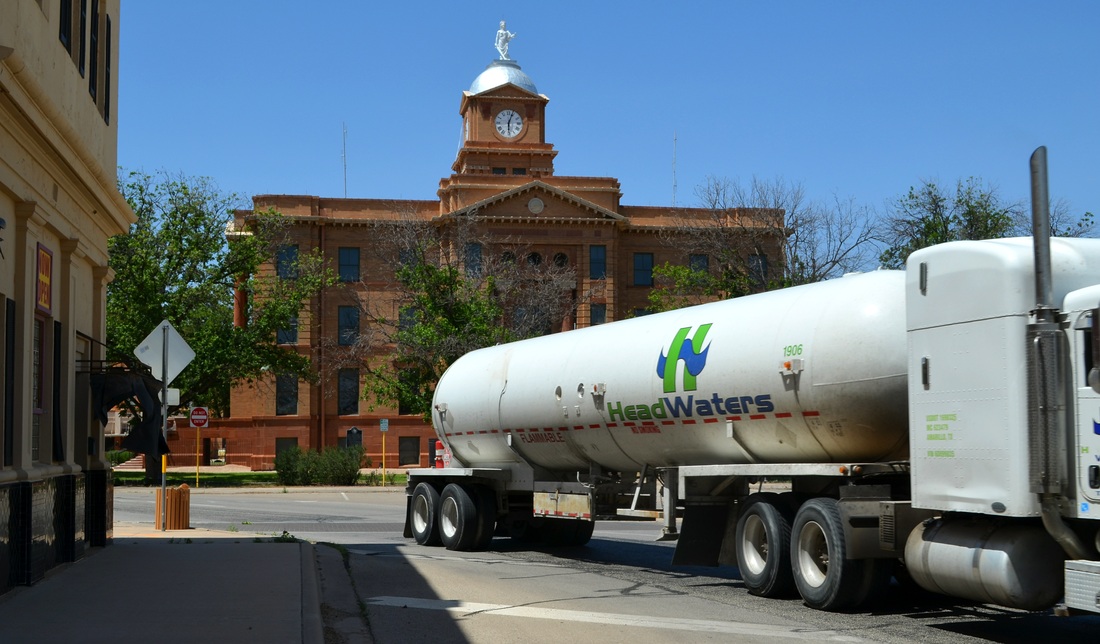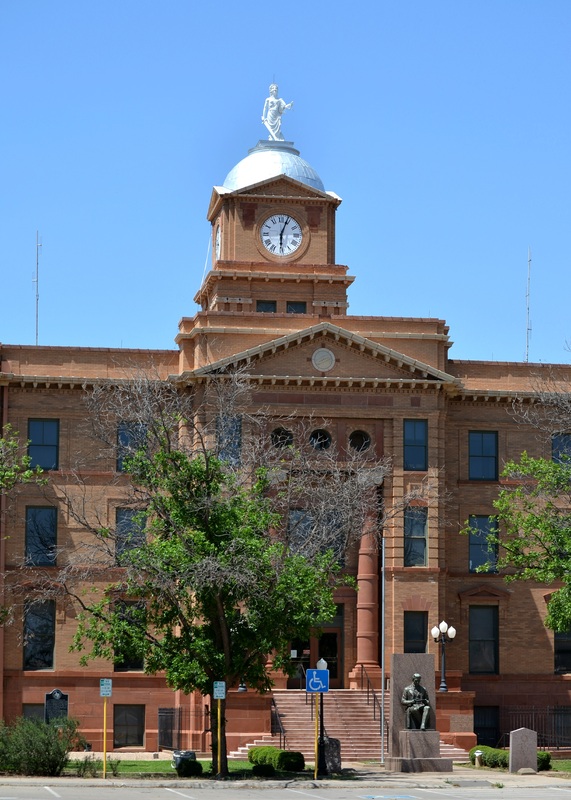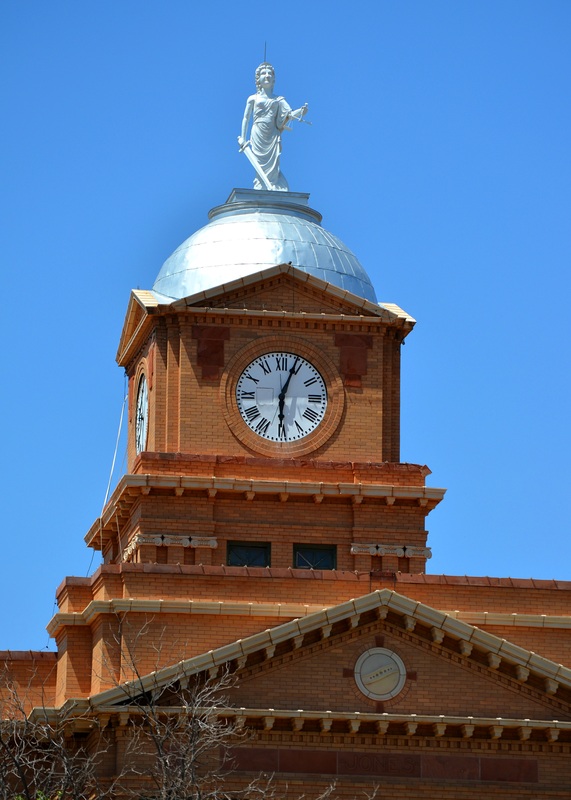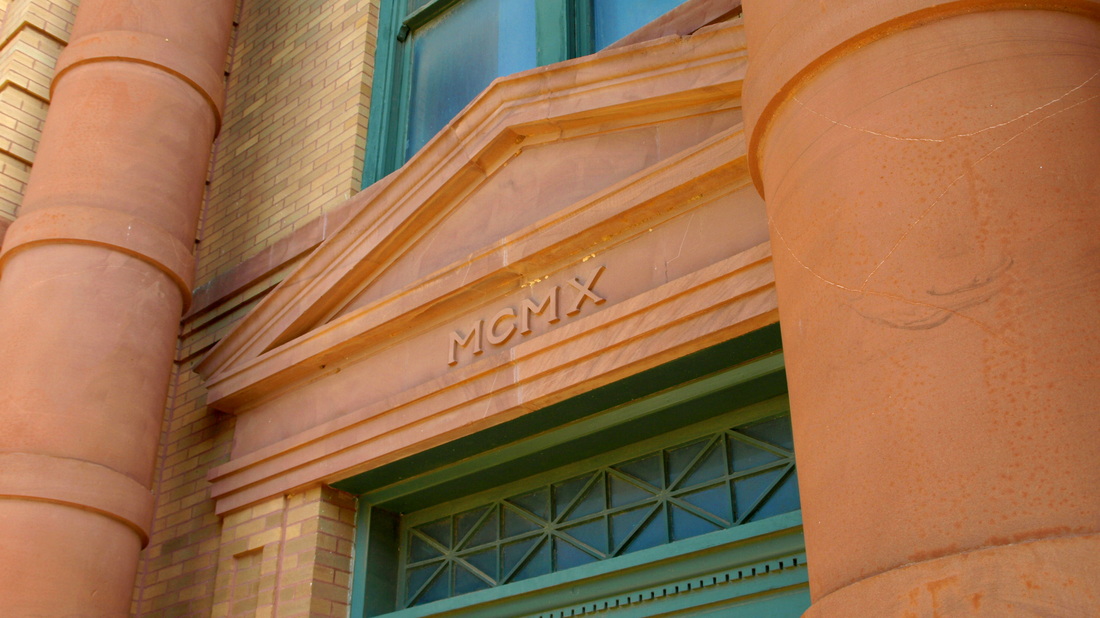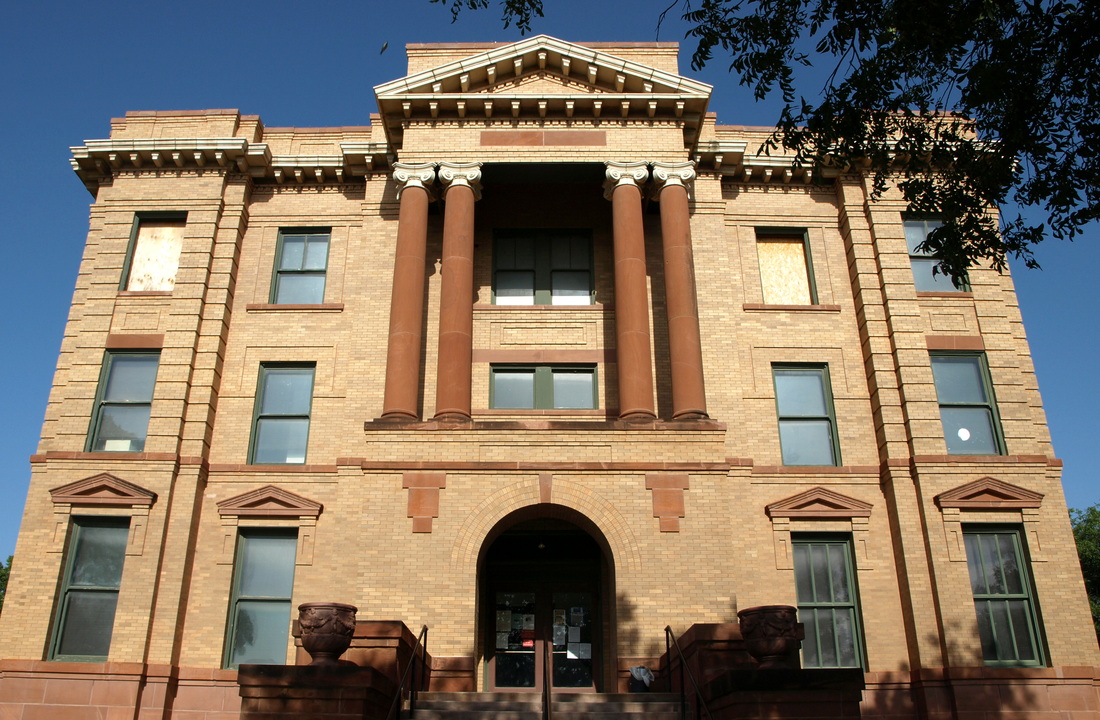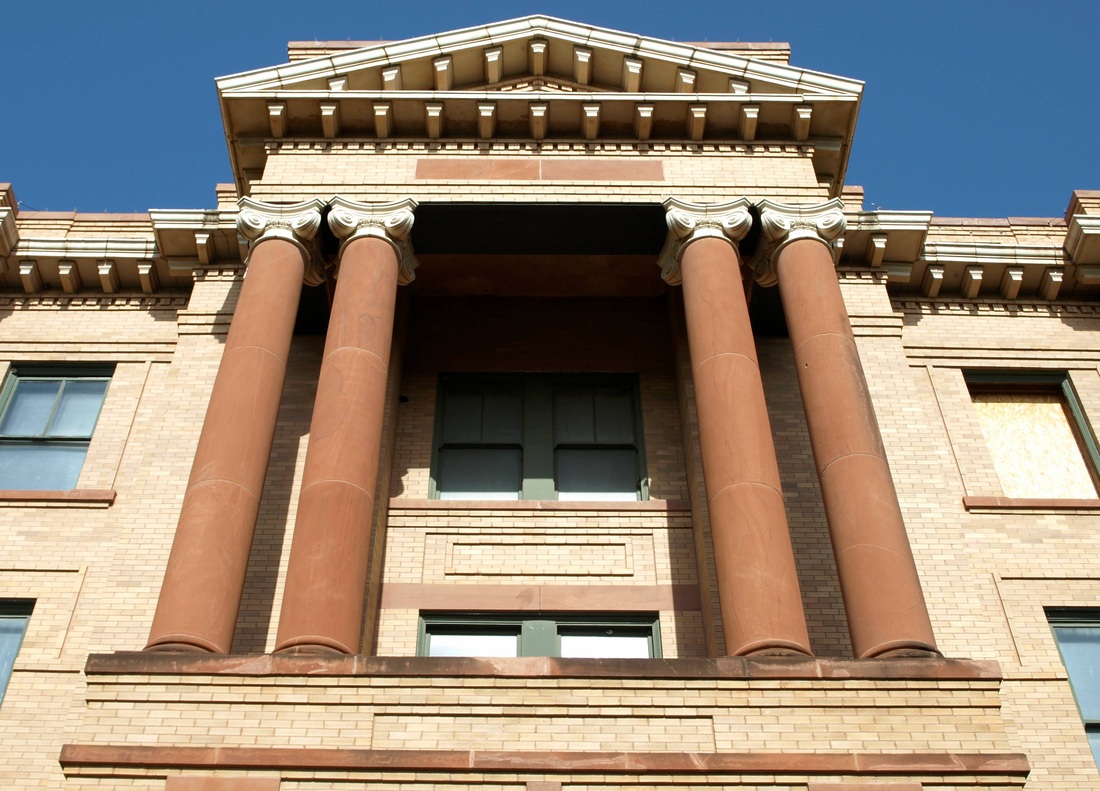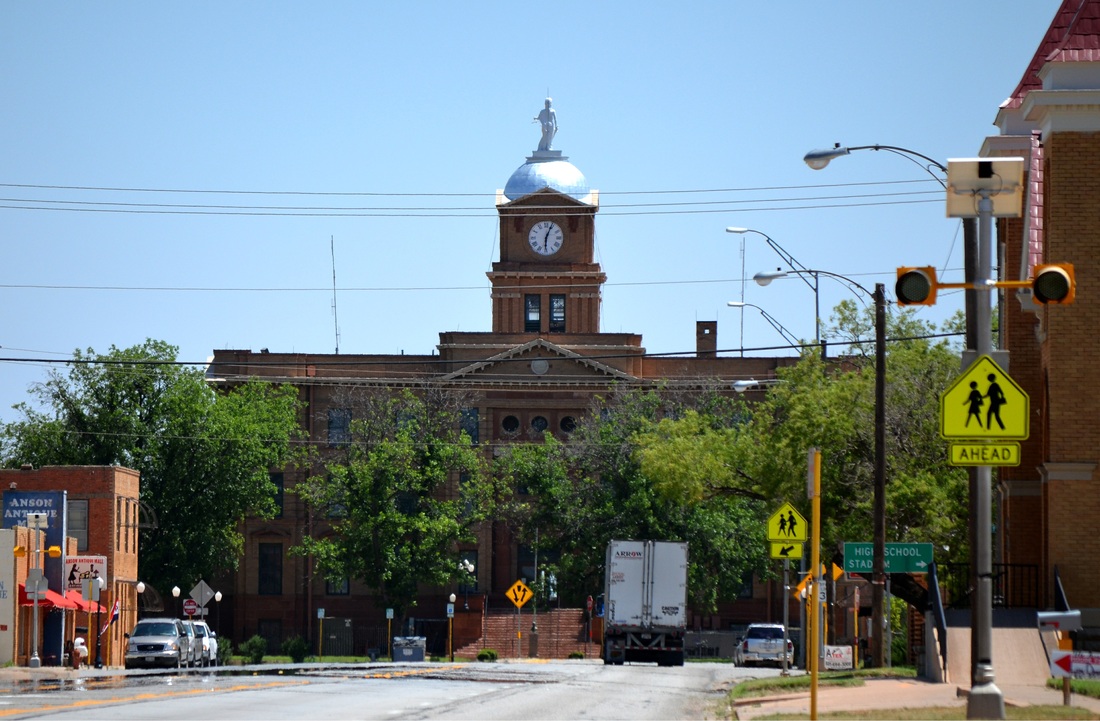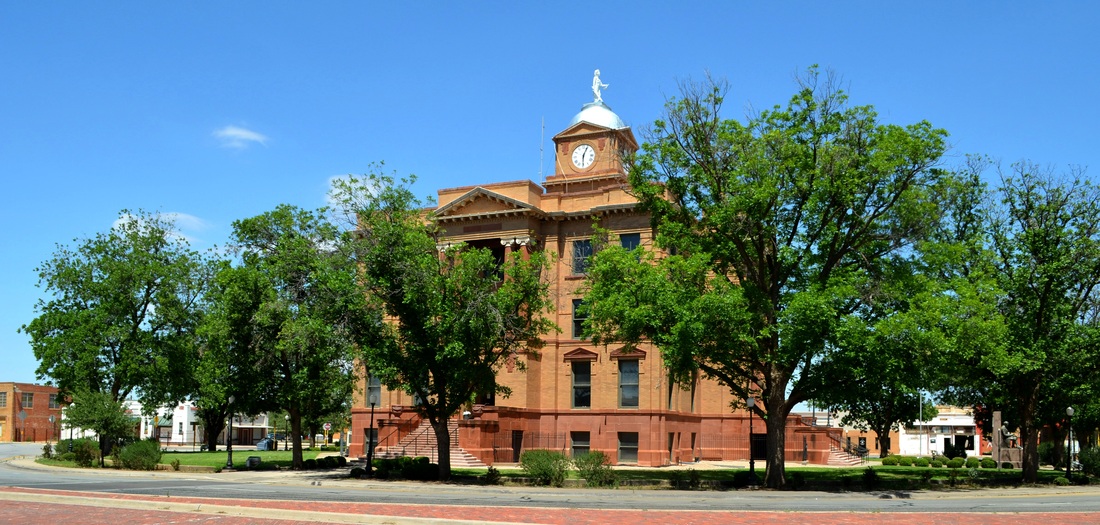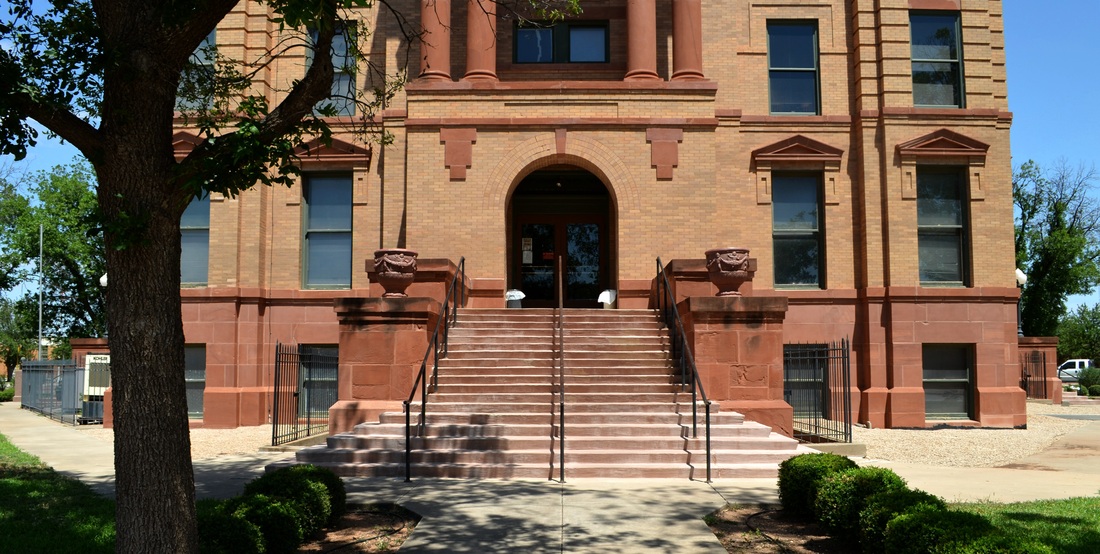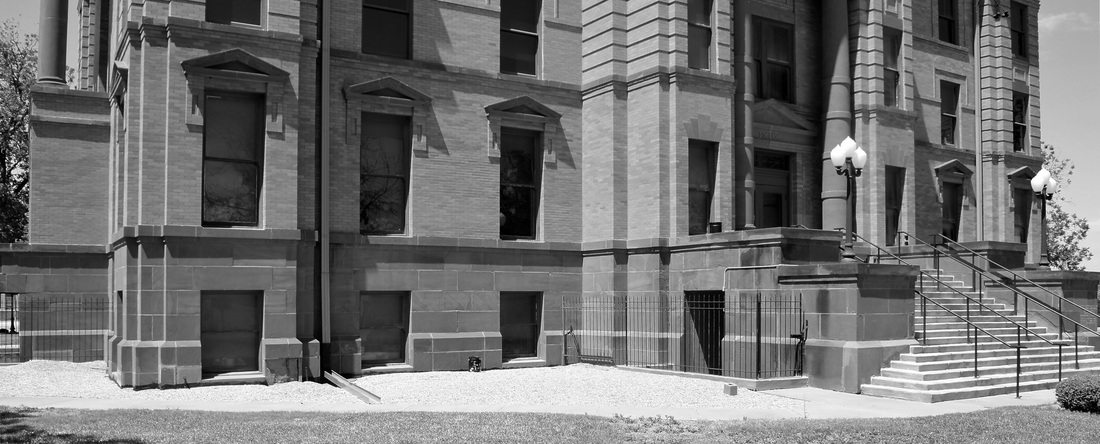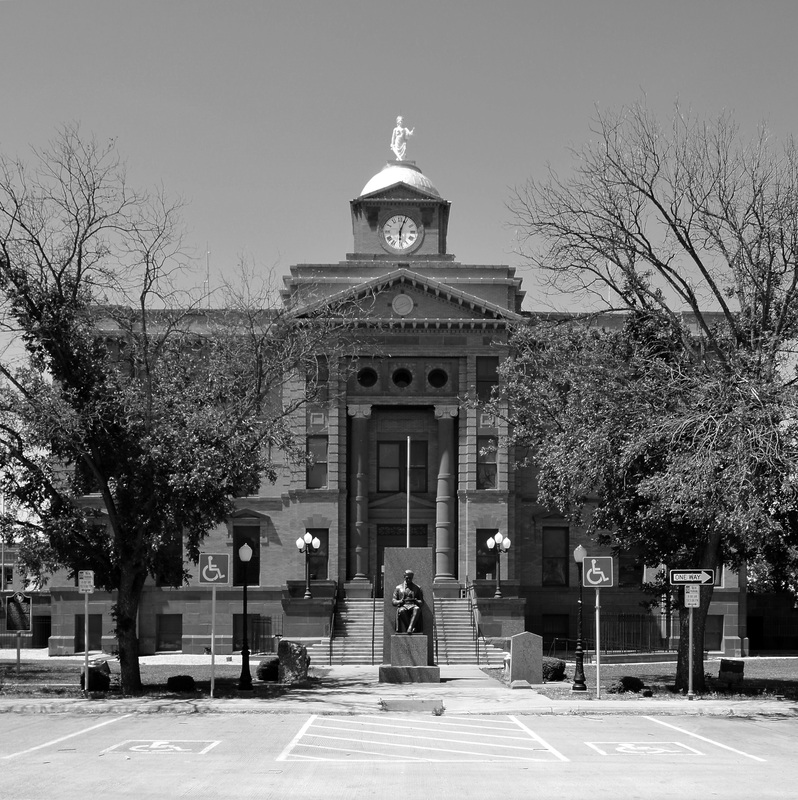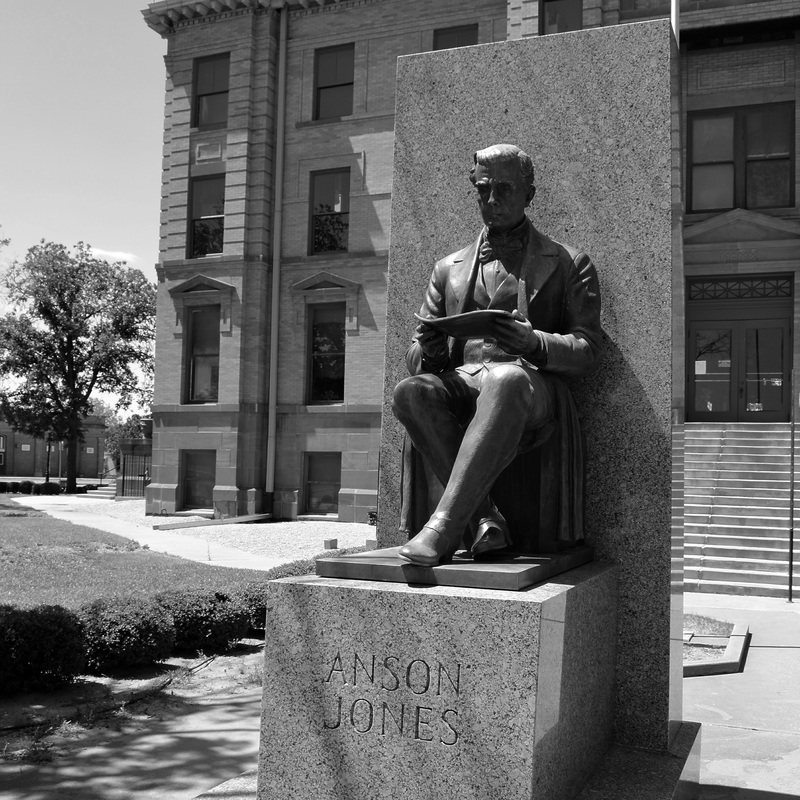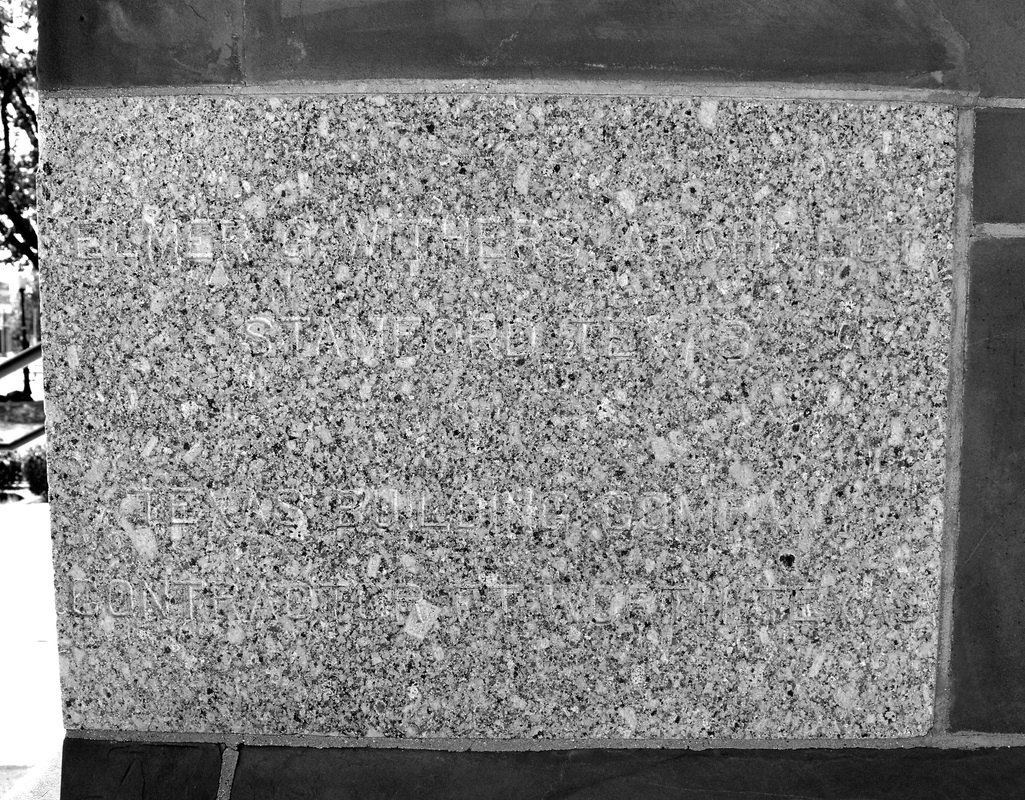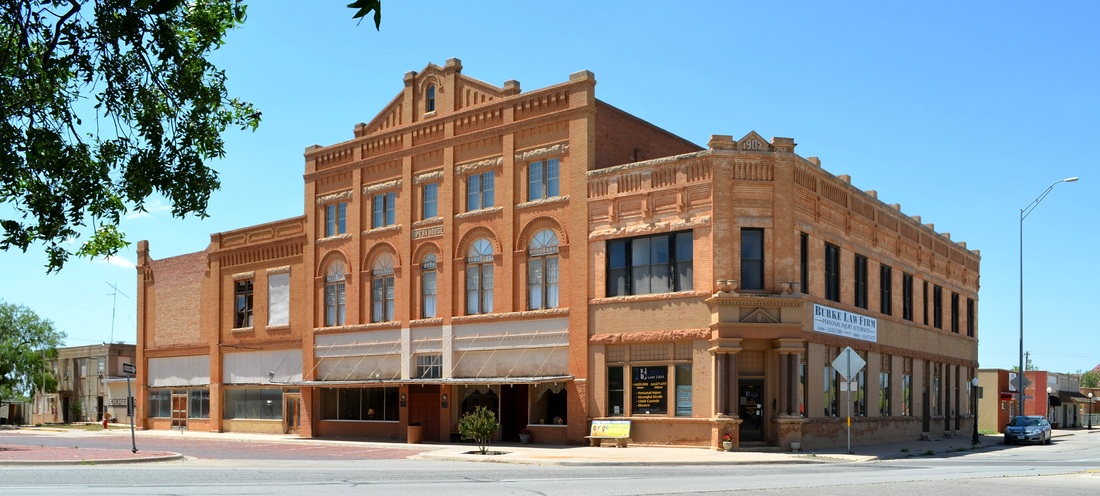059 of 254: Jones County Courthouse, Anson, Texas. County Population: 20,202
|
"Jones County was established on February 1, 1858, from Bexar and Bosque counties. The county was named for Anson Jones, statesman of the Republic of Texas.
"The earliest white settlement of Jones County was in 1851 when Fort Phantom Hill, near the site of present Hawley, was established as one of a line of forts from the Red River to the Rio Grande. The fort was abandoned in 1854, and in 1858 the location was made a station on the Butterfield Overland Mail route from St. Louis to San Francisco. "During the Civil War Indian raids forced the frontier back to the east, and the area was not settled for another fifteen years. In 1872 the military post was reestablished, and a settlement was made on a stream four miles distant. "In 1880 John Merchant built a mesquite corral at the site of the future county seat, and Henry Foster put up the first wire fence in the county. "...when the county was organized in 1881 Jones City was declared the county seat. In 1882 the name of the county seat was changed to Anson." Mark Odintz, "JONES COUNTY," Handbook of Texas Online (Like Gail, seat of Borden County, and Emory, seat of Rains County, Anson, seat of Jones County is the first name of the person for whom the county is named.) I visited Jones County and photographed the courthouse on Sunday, July 25, 2010 and again on Saturday, June 1, 2013. |
Jones County Courthouse 1910"The 1910 Jones County Courthouse is at the heart of Anson, Jones County, Texas. The stately building is three full stories and a basement, with entrances on all four sides. The rectangular building dominates the town square, and is also aligned on the main north-south street through town, and so the courthouse is visible from miles away. The courthouse is designed in the Beaux Arts style, with projecting pavilions, tall columns, quoins, and pediments. A central clock and bell tower is crowned with a cupola and goddess of liberty statue.
"The Jones County Courthouse was largely restored from 1994 to 1998 through local funding and a grant from the Texas Department of Transportation (TXDOT), through the ISTEA program (Intermodal Surface Transportation Enhancement Act)." From the National Register narrative |
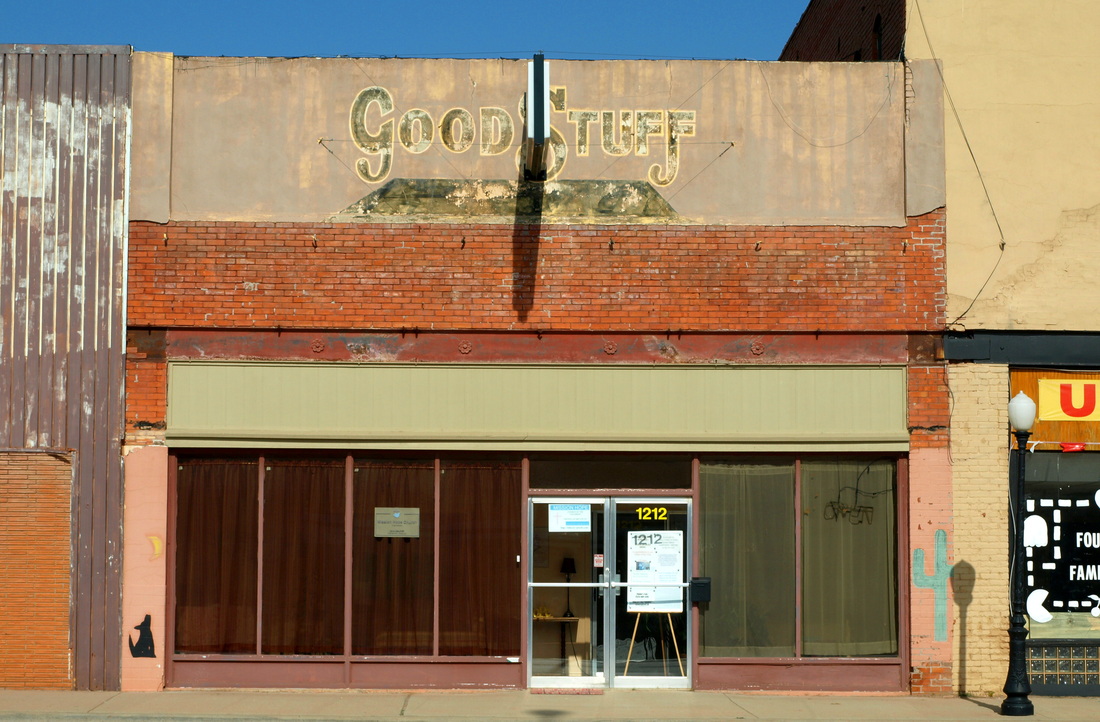
Anson was developed based on promises that the Texas & Pacific Railway would pass through on its way west, towards El Paso and California. It never happened; the T&P took a more southerly route through Abilene, about 25 miles south of Anson and the rest was history. Today, the good stuff in Anson is its collection of historic buildings.
